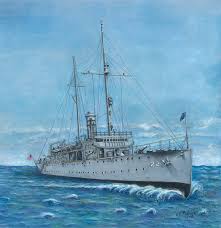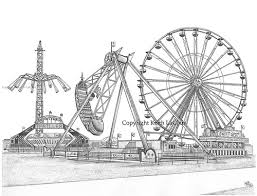Source:Google.com.pk
Pencil Drawings Of Ships Biography
laude Monet has emerged in the recent literature as a different historical figure from the courageous, penniless and misunderstood revolutionary portrayed in John Rewald's History of Impressionism (1946). In fact, Virginia Spate (The Colour of Time, 1992) had characterized Monet as a self-centered artist, a spendthrift with dandy tendencies rather than a sympathetic or generous person, even to friends of family, and as a perennial manipulator. Although he indeed experienced bad years, especially in the late 1860s and late '70s, it turns out that he was actually rather well-to-do for most of his life.
All in all, it would seem that Monet had a higher standard of living than the average Parisian doctor, and beginning in the 1890s he became downright wealthy. If he had been sometimes short of cash, it was because he liked to live in big houses, eat good food and drink good wine. Later on he was far more affluent, partly because of the high prices his work commanded, partly because - not what you might expect of a misty, nature-loving Impressionist, this - he played the stock exchange.
If Monet talked a lot about money, it was, in the words of the biographer Spate, because he was "obsessed by it, chronically mean but a huge spender, and even when he was very rich, irrationally fearful of losing everything".
However, income aside, it would be misleading to forget how non-conformist Monet was for his times: he fathered his first child out of wedlock, avoided wartime military responsibilities, setup a household (after the death of his first wife) with a married woman and disavowed religion to say nothing of his revolutionary approach to painting which left the 20th century a lasting legacy." (1)
YOUTH
Monet was born on November 14, 1840 on the fifth floor of 45 rue Laffitte, in the ninth arrondissement of Paris. He was the second son of Claude-Adolphe and Louise-Justine Aubrée Monet, both, second-generation Parisians. He later described the Parisian atmosphere of his home as “entirely concerned with commerce, where everyone professed a contemptuous disdain for art.” In reality, Oscar’s mother Louise-Justine was an elegant woman and trained soprano who loved to paint and write poetry. "Mme Monet was a consummate hostess who filled their ornately decorated home with music and cultured guests. On May 20, 1841, he was baptized into the local church parish, Notre-Dame-de-Lorette as Oscar-Claude."(2)
The young Monet spent his childhood in the Normandy coastal town of Le Havre , where his father prospered as a grocer and ship chandler. This event has more than biographical significance, for it was Monet's childhood, spent along the beaches, and the intimate knowledge he gained of the sea and the rapidly shifting Norman weather, that would one day give rise to his fresh vision of nature. The sea thus became the constant background of his whole childhood, and he spent more time roaming the beaches than in the schoolroom. He wrote of himself:
"I was born undisciplined. Never, even as a child, could I be made to obey a set rule. What little I know I learned at home. School was always like a prison to me, I could never bring myself to stay there, even four hours a day, when the sun was shining and the sea was so tempting, and it was such fun scrambling over cliffs and paddling in the shallows. Such, to the great despair of my parents, was the unruly but healthy life I lived until I was fourteen or fifteen. In the meantime I somehow picked up the rudiments of reading, writing and arithmetic, with a smattering of spelling. And there my schooling ended. It never worried me very much because I always had plenty of amusements on the side. I doodled in the margins of my books, I decorated our blue copy paper with ultra-fantastic drawings, and I drew the faces and profiles of my schoolmasters as outrageously as I could, distorting them out of all recognition."
Although his father urged his son to dedicate himself to the family grocery store business, Monet wanted to become an artist. Perhaps the musical inclinations of his mother had had played a part of the aesthetic background of Monet's childhood.
Monet drew feverishly as a child. In these early years he executed pencil sketches of sailing ships, which were almost technical in their clear descriptiveness. A document detailing this activity emerged recently with the discovery of a book-length journal that had belonged to Théophile Beguin Billecocq, a friend of the Monet family who was himself an amateur draftsman. Billecocq encouraged the young Monet taking him on holiday outings observing him and encouraging him by giving him money and buying pictures from him. Billecocq describes going on picnics where the Monet handed everyone sketchbooks for drawing competitions that he would always win. "His sketches, whether in crayon or pencil, were always excellent, even if they were rapidly executed," Billecocq wrote in his journal. "He knew how to capture the essential characteristics of a scene."








Pencil Drawings Of Ships Biography
laude Monet has emerged in the recent literature as a different historical figure from the courageous, penniless and misunderstood revolutionary portrayed in John Rewald's History of Impressionism (1946). In fact, Virginia Spate (The Colour of Time, 1992) had characterized Monet as a self-centered artist, a spendthrift with dandy tendencies rather than a sympathetic or generous person, even to friends of family, and as a perennial manipulator. Although he indeed experienced bad years, especially in the late 1860s and late '70s, it turns out that he was actually rather well-to-do for most of his life.
All in all, it would seem that Monet had a higher standard of living than the average Parisian doctor, and beginning in the 1890s he became downright wealthy. If he had been sometimes short of cash, it was because he liked to live in big houses, eat good food and drink good wine. Later on he was far more affluent, partly because of the high prices his work commanded, partly because - not what you might expect of a misty, nature-loving Impressionist, this - he played the stock exchange.
If Monet talked a lot about money, it was, in the words of the biographer Spate, because he was "obsessed by it, chronically mean but a huge spender, and even when he was very rich, irrationally fearful of losing everything".
However, income aside, it would be misleading to forget how non-conformist Monet was for his times: he fathered his first child out of wedlock, avoided wartime military responsibilities, setup a household (after the death of his first wife) with a married woman and disavowed religion to say nothing of his revolutionary approach to painting which left the 20th century a lasting legacy." (1)
YOUTH
Monet was born on November 14, 1840 on the fifth floor of 45 rue Laffitte, in the ninth arrondissement of Paris. He was the second son of Claude-Adolphe and Louise-Justine Aubrée Monet, both, second-generation Parisians. He later described the Parisian atmosphere of his home as “entirely concerned with commerce, where everyone professed a contemptuous disdain for art.” In reality, Oscar’s mother Louise-Justine was an elegant woman and trained soprano who loved to paint and write poetry. "Mme Monet was a consummate hostess who filled their ornately decorated home with music and cultured guests. On May 20, 1841, he was baptized into the local church parish, Notre-Dame-de-Lorette as Oscar-Claude."(2)
The young Monet spent his childhood in the Normandy coastal town of Le Havre , where his father prospered as a grocer and ship chandler. This event has more than biographical significance, for it was Monet's childhood, spent along the beaches, and the intimate knowledge he gained of the sea and the rapidly shifting Norman weather, that would one day give rise to his fresh vision of nature. The sea thus became the constant background of his whole childhood, and he spent more time roaming the beaches than in the schoolroom. He wrote of himself:
"I was born undisciplined. Never, even as a child, could I be made to obey a set rule. What little I know I learned at home. School was always like a prison to me, I could never bring myself to stay there, even four hours a day, when the sun was shining and the sea was so tempting, and it was such fun scrambling over cliffs and paddling in the shallows. Such, to the great despair of my parents, was the unruly but healthy life I lived until I was fourteen or fifteen. In the meantime I somehow picked up the rudiments of reading, writing and arithmetic, with a smattering of spelling. And there my schooling ended. It never worried me very much because I always had plenty of amusements on the side. I doodled in the margins of my books, I decorated our blue copy paper with ultra-fantastic drawings, and I drew the faces and profiles of my schoolmasters as outrageously as I could, distorting them out of all recognition."
Although his father urged his son to dedicate himself to the family grocery store business, Monet wanted to become an artist. Perhaps the musical inclinations of his mother had had played a part of the aesthetic background of Monet's childhood.
Monet drew feverishly as a child. In these early years he executed pencil sketches of sailing ships, which were almost technical in their clear descriptiveness. A document detailing this activity emerged recently with the discovery of a book-length journal that had belonged to Théophile Beguin Billecocq, a friend of the Monet family who was himself an amateur draftsman. Billecocq encouraged the young Monet taking him on holiday outings observing him and encouraging him by giving him money and buying pictures from him. Billecocq describes going on picnics where the Monet handed everyone sketchbooks for drawing competitions that he would always win. "His sketches, whether in crayon or pencil, were always excellent, even if they were rapidly executed," Billecocq wrote in his journal. "He knew how to capture the essential characteristics of a scene."
Pencil Drawings Of Ships
Pencil Drawings Of Ships
Pencil Drawings Of Ships
Pencil Drawings Of Ships
Pencil Drawings Of Ships
Pencil Drawings Of Ships
Pencil Drawings Of Ships
Pencil Drawings Of Ships
Pencil Drawings Of Ships
Drawing Ship
Ghost Ship Speed Drawing
No comments:
Post a Comment